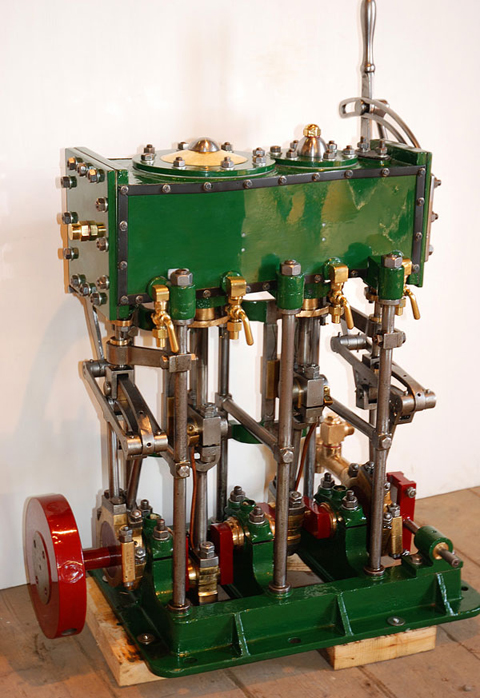
|
It appears that the concept of zero, and the negative numbers that precede it—follow from it?—came originally from India and were brought into the Western world by Arab traders. All of this happened in the 7th century AD, long after the fall of the Western Roman Empire and the earlier eclipse of the ancient Greek scientific culture. The Greeks, who apparently based their mathematics on geometry, never considered negative numbers or zero, as all their measurements in space were positive. The Romans, who were practical engineers and not theorists, drew straight lines and simple arches with positive numbers, which they identified with alphabetic notation. So, once again, I’m wondering where all this nothingness, this absence, came from.1
Modern life is permeated by numbers. This is part of the 17th-century scientific revolution—think of the countdown to zero in a rocket launch—and also part of the social revolution in personal literacy, which began with Gutenberg-style printing in the 14th century, and the economic revolution in finance and banking, which was started by the Italians and their letters of credit at about the same time. Today, almost everyone has a bank account, a checkbook, a credit or debit card, and a line of credit. We are adding and subtracting numbers all the time, and we all—or most of us—watch as that dreaded lower limit, zero balance, or even a potential overdraft, a negative number, approaches. We also watch clocks made of numbers and count the hours negatively until quitting time.
We think easily in terms of null and negative arithmetic. “How many supermodels did you date last year?” Zero. “How are you doing at the blackjack table?” Down by five hundred bucks.
Did the ancient Greeks or Romans not have these and similar, context-sensitive conversations? Well, probably. But not in a mathematical framework. “How many sheep do you have?” None—I don’t keep sheep. “What did you win betting on the chariot race?” Oh, nothing—I lost.
In a world where we are not so conscious of modern mathematical concepts. A person focused on what was there, in existence, in front of their face. Yes they could do subtraction: I had five apples and gave you two; now I have three apples. But the concept of zero was the simply concept of not having, not being, not knowing. It didn’t have a number. The idea of having fewer than zero apples, because you gave away more than had, didn’t arise very often. And if you owed a debt, you didn’t think of it as a negative number in your bank balance but instead as a positive number that you eventually had to pay to someone else.
Are we better off for being more sophisticated about all this? Certainly, our kind of mathematics has enabled us to calculate with both positive and negative forces, compare tradeoffs, and create simulations of complex systems. It was modern mathematics that took us to the Moon and Mars, and some variant will take us to the stars. Zero is a real number, and negative numbers have real meaning, when you’re making these calculations.
For the ancients, the world was made up of substances. Their elements were earth, water, air, and fire. Even though the last two are gases, and air itself is invisible, anyone who has taken a deep breath and blown it out—or blown into a trumpet or a flute—would notice air’s liquid nature. Anyone who has watched fire curl around a candle wick or tremble in the wind could see that it is also semi-liquid.
The ancient Greeks and Romans never had mountains high enough that they could notice the air getting thinner the higher you went. They would not have come to the obvious conclusion, then, that at some point such thinness might lead to nothing at all, a vacuum. For them, the space above the Earth was a series of concentric spheres that held and propelled the orbits of the Sun, Moon, planets, and stars—and there might as well be air between those spheres than nothing at all. Only with modern aircraft and rocketry do we know that the air runs out about twenty miles above the Earth’s surface and all the rest is empty space.2
For the ancients, these substances were solids, not divided into tiny bits, and then even tinier bits, until you arrive at subatomic fragments too small to see or weigh. Democritus of Athens did theorize about atoms and empty space, but he probably thought of those atoms as jostling around each other like marbles in a bag. The idea that atoms themselves are mostly empty space occupied by subatomic particles, and that everything we can see and touch is a lot more nothing than something, is a concept out of modern physics. On both the quantum and cosmological levels, we have to get our heads around the idea of nothing, non-being, emptiness on a mind-boggling scale.3
The poor human brain evolved in a world full of—and was adapted to deal with—real things. We survived by knowing about the tangible environment and manipulating objects and forces that could hurl a spear to bring down a deer or gather and carry roots and berries to a place of familial consumption. Our peripheral vision is cued to a trembling in the bushes—even if it’s only the wind, because it just might be a predator stalking us or a human enemy trying to ambush us. We are primed to experience and work with what’s there, and not what’s not.
But nothing is on our minds now. And its reach is growing, especially since the 20th century, when existentialist philosophers began to question why humans, the world, and everything in it even exist. Apparently, for them, nothing is the default state of the universe and the only thing that doesn’t have to be explained. So, at least for the French avant garde, our thinking on being and nothingness has come full circle.
Forgive me for occasionally having nothing on my mind. It’s been a slow week, and I’ve run out of ideas.
1. See About Nothing from June 25, 2017.
2. Except that modern physics insists on filling space with somethings. For example, Stephen Hawking solved the problem of the apparent evaporation of primordial black holes by positing the instantaneous creation and mutual destruction of particles and anti-particles in a vacuum, going on all the time, invisibly, everywhere. When one of those pairs happened to spontaneously erupt along the event horizon of a black hole, one of the paired particles fell into the hole and the other drew out a quantum of energy in response. And so micro black holes disappeared over time. … Oh, hell! Hawking might as well have said that pixies ate them.
3. How big is an atom? I’ve read somewhere that if the nucleus of a small atom like hydrogen or helium were the size of a fly inside Notre Dame cathedral, then the electron shells and their potential orbits would occupy the entire enclosed space. And all the rest would simply be empty.



